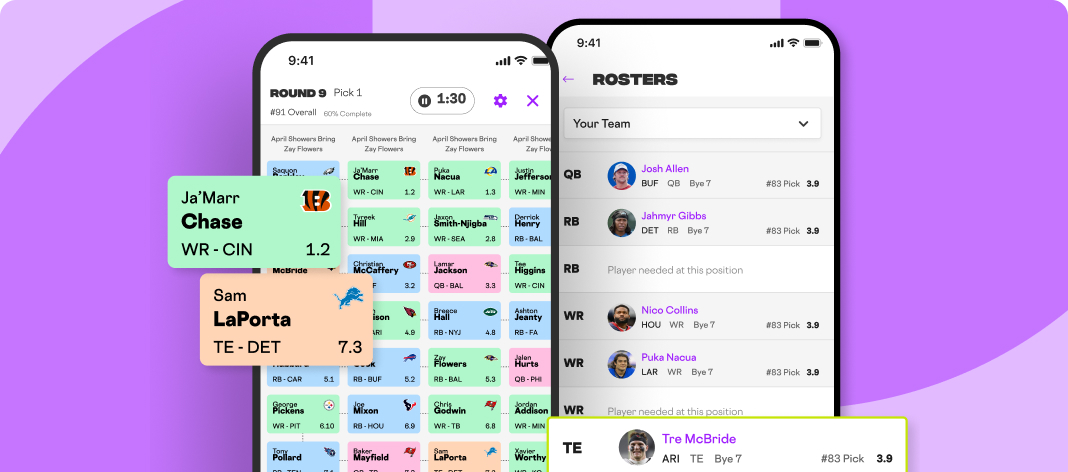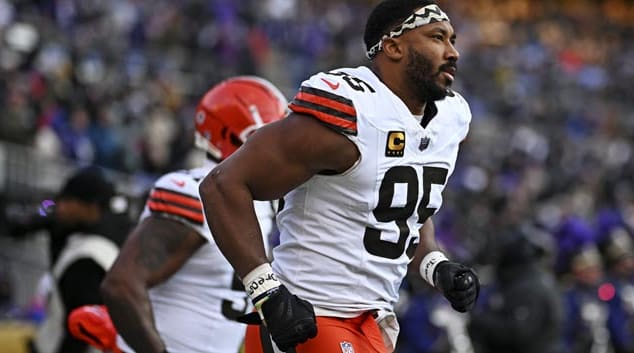A one size fits all draft strategy in fantasy football is never a good idea. That goes double if you are in a PPR league. Those extra points for receptions add up in a hurry and make tailoring a strong PPR draft strategy a must for all PPR fantasy managers. We aim to help with that by showing how you can use RotoWire, the best fantasy football draft assistant around, to craft the perfect PPR draft strategy for your league.
What Is PPR Scoring in Fantasy Football?
PPR stands for points per reception. In this type of scoring, players gets a point for each reception they tally. There are also leagues that give a half-point per reception (known as half PPR leagues). Leagues that don't provide those points are called standard leagues.
These points make a PPR vs standard draft approach quite different. In PPR leagues, WRs, TEs and pass-catching RBs will rate much higher in the 2025 fantasy football rankings than they will in standard leagues.

Why Draft Strategy Changes in PPR vs Standard Leagues
These additional points in a PPR league typically increase the values of those players by around 10%. Touchdowns are still highly valuable in this scoring format, so PPR points can be seen as a value adjuster or tiebreaker in custom fantasy football rankings.
One way to gauge this value is by looking at a player's projected target volume. This projection is available in the RotoWire fantasy football draft kit. Accounting for these PPR player target levels and their projected catch rates can give you a good idea of just how much extra value this player will get from receptions.
PPR Draft Strategy for Beginners: Key Concepts to Know
PPR leagues are very popular because they make it much easier for managers to avoid starting players who will post the dreaded goose egg (zero points). It also makes scoring consistency readily available, so you should use your fantasy football cheat sheet to find a solid volume of consistent scorers.
Another major scoring change in PPR leagues is that two-down RBs (ones who are primarily on the field on rushing downs) have lower fantasy football auction values and snake league value than they do in standard leagues. Their lack of receptions places them at a disadvantage in PPR leagues vs RBs who register down counts on passing plays.
Player Archetypes to Prioritize in PPR Leagues
The PPR scoring environment grants fantasy managers a huge selection of value propositions that standard leagues don't offer. For instance, a third down running back who catches 50+ passes can give your RB bench superb depth.
The same goes for possession receivers, be it at wide receiver or tight end. The key benefit here is that if the latest NFL news tells you injuries are going to be a problem, PPR leagues give you a lot of different ways to work around those issues, even if they occur at the last minute.
Who to Avoid in PPR Drafts (Low-Target Volume Players)
One of the big PPR fantasy football draft tips you'll want to remember is that you shouldn't place much value on big-play WRs who have inconsistent target levels. They may help win a game with a big point total one week, but they are just as likely to lose you a game with zero point showing the next.
Example PPR Draft Targets for 2025 Beginners
It's a really good idea to use a mock draft simulator to figure out your PPR league selections before your draft. Doing this will help you know which mid-round value picks with high reception upsides are likely to be selected and when on draft day.
This practice method can also help you find late-round sleepers on high-powered offenses, who may generate consistently strong PPR point totals.
Final Tips to Build a Strong PPR Fantasy Roster
The best way to make sure you build a strong PPR fantasy roster is by subscribing to RotoWire. This MVP among fantasy football subscriptions will help you monitor preseason usage and target share trends. You will also get customized cheat sheets with PPR-specific rankings. This cuts down the PPR learning curve dramatically, so click on one of these links and subscribe to RotoWire today!






















